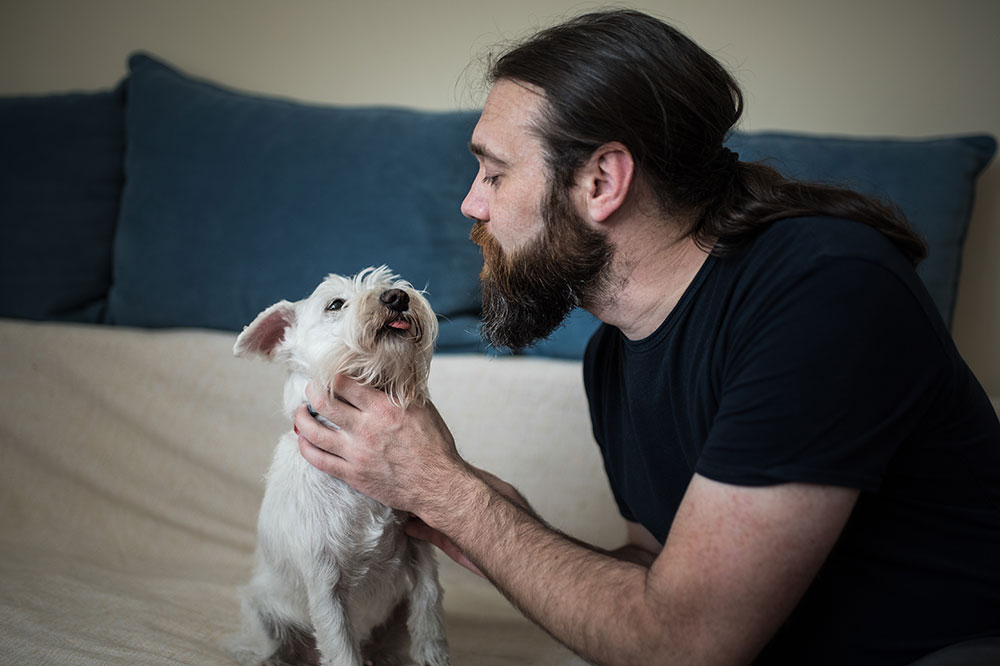
Ways to Decode Canine Communication with Humans
Humans tend to rely on verbal modes when communicating with each other. On the other hand, dogs communicate primarily via body language and secondarily through vocalizations. While having a dog whisperer would take the guesswork out of the situation, understanding inter-species communication is not as straightforward. Therefore, when deciphering what is being communicated, you must observe the entire dog (tail carriage/motion, facial expressions, body position, etc.) and the situation or context.
Looking for non-verbal cues:
Since dogs cannot vocalize their feelings, they may use the following non-verbal cues for our benefit:
Tail
Tail wagging is the most obvious sign to observe. However, it may not always mean the dog is happy, friendly, or excited. Remember to look for other cues to understand their mood. Here are some general tail motions that can help decipher how your dog is feeling:
- A curled tail could be a relaxation, confidence, or dominance stance.
- A straight, stiff tail generally signals that the dog is focused on an activity or tracking something.
- A tucked or lowered tail is a sign of fear or submission.
Ears
Isn’t it adorable watching a dog’s ears perk up? Their ears are also an important part of communication! Perky ears are generally a sign of interest and focus, while floppy ears are a sign of submission. Ears pinned towards the back of the head could indicate that the dog is unhappy or uncomfortable.
Eyes
Just like humans, dogs also use their eyes to communicate. When receiving a belly rub or a pat, dogs close their eyes in pleasure or delight. Seeing the whites of a dog’s eyes indicates they are on high alert and want space. An unblinking dog may be taking an aggressive stance or just staring at you for attention. Remember to read the context before assuming what dogs are trying to communicate with you.
Mouth
You can tell the dog’s mood by looking at their mouths. Some dogs smile wide with their ears forward, relaxed eyes, and big open mouths with their tongues out when they are happy. When a dog bares their teeth, it may indicate they are unhappy, scared, or aggressive.
Dogs also use licking to convey emotions, including affection, submissiveness, excitement, and stress. Generally, licking their guardians or engaging in mutual grooming activities is a sign of affection and love. However, excessively licking themselves may be related to an underlying cause such as fleas, ticks, or allergies.
Understanding their language groups of communication
Here are the five most common groups of communication dogs may use:
Fear
Dogs react to fearful situations with their whole body. The intensity of these reactions may increase as the situation progresses. They may lick their lips or yawn even though they are not tired or hungry. Alternatively, they may keep their mouths tightly closed. Some dogs may also cower and tuck their tails between their legs. They may show signals similar to a panic attack in humans – they may shake, tremble, or avoid eye contact. In some dogs, fear may manifest as a lack of responsiveness; for instance, they may not eat food or treats or engage with people passing their kennel.
Experiencing fear or threat for a prolonged time may also compel some dogs to turn aggressive.
Arousal
Some dogs exhibit excitement and arousal as well. This may be because of age, confinement, lack of physical and mental outlets, or their personality. The most common behaviors of excited dogs are jumping, mounting, or mouthing. This response is often instigated when dogs see something they like – a person, a toy, or even another dog. For example, a dog with a soft, relaxed body and a wagging tail may jump up for attention when they see someone they like. They may also play-bow around something they like as a way of engaging.
You may also notice arousal behaviors around negative stimuli, such as an unwanted person, animal, or situation. Here, the excitement response is often coupled with the communication they commonly use for expressing fear, such as a burrowed tail or trembling.
Anxiety
Dogs show their anxiety by panting excessively, pacing, and lacking focus. They may also showcase similar traits as fearful dogs. Anxious dogs may also wag their tails slowly and move away from people. They may shed or drool heavily. Some anxious dogs may ‘shut down’ and stop showing any behaviors, while others may demonstrate arousal behaviors due to stress or anxiety. When living inside a kennel, an anxious dog may be constantly barking, pacing, circling the area, or jumping off the side walls.
Aggression
Aggressive behavior in dogs is generally triggered by a perceived threat, such as another dog, human, or situation. This is generally exhibited as a protective mechanism to convey that the dog will protect itself and its territory. Common aggressive body language in dogs includes stiffening or freezing of the body, wide eyes with a lot of white showing, tense mouth, curled lips, wrinkled nose, teeth showing, barking, growling, and air snapping.
Relaxation
Relaxed dogs are perhaps everyone’s favorites. Their mouths are relaxed and may slightly turn up at the corners to give the appearance of a smile. Their head and ears are neutral, and they have soft eyes. Their body is loose and stress-free, and their tail may wag back and forth or in a circular motion.
Pets are an important part of our lives. Whether we understand their non-verbal cues entirely or not, protecting them and keeping them safe is important. To do so, you can consider installing an in-ground fence (an underground or wired fence). With simple installation and no physical fence upkeep, these fences can help you establish a boundary for your pup and protect them from traffic, strangers, and other dangers outside your home!


